Connecting Tarot Cards with Witchcraft Practices
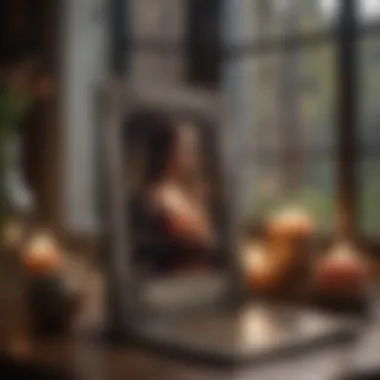
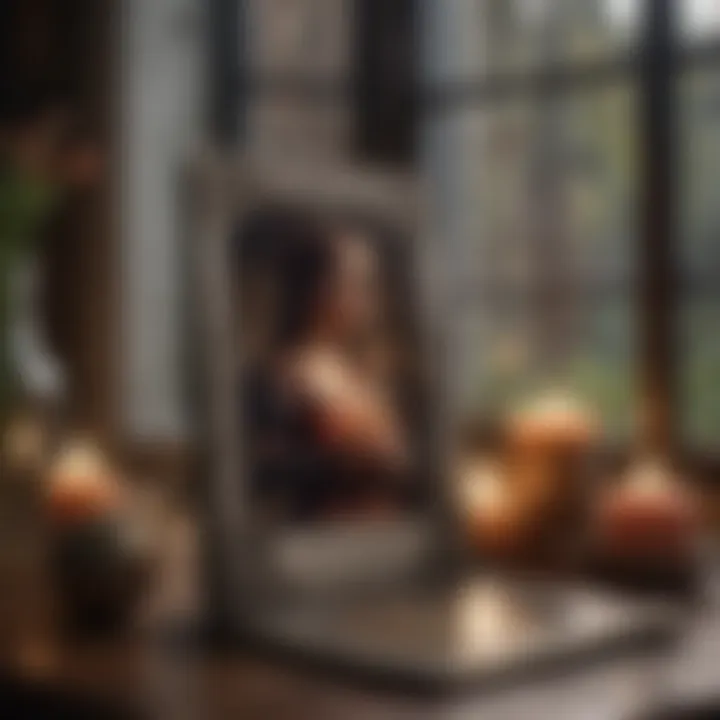
Intro
Humanity has always been curious about the unseen forces that govern life. Among the various tools used for divination and self-discovery, tarot cards and witchcraft are deeply interwoven, sharing histories that span centuries and cultures. Their relationship is not merely an amalgamation of symbols and rituals; it’s a dynamic dialogue that reflects the evolving spiritual landscape.
As practitioners of these ancient arts explore their own paths, they often find themselves standing at a crossroads, where tarot offers insight into the subconscious and witchcraft lends itself to intuition and personal power. This article will navigate the intricate layers that define these practices, including the historical contexts from which they emerged, and the contemporary meanings they hold.
Each section intends to shed light on the historical roots, shared practices, and ongoing significance of both tarot and witchcraft. From understanding how the major and minor arcana in tarot correlate to elemental forces often seen in witchcraft, to exploring the mundane yet profound system of zodiac signs that shape personal experiences, every aspect plays a critical role in the art of navigating one’s spiritual journey.
By revealing the synergy between tarot cards and witchcraft, enthusiasts will not only come to appreciate the crafting of their own narratives but also see the emotional and psychological tapestry that these practices weave through self-exploration and divination. Let’s embark on this journey, unfolding the threads of insight that both tarot and witchcraft provide.
Historical Context of Tarot Cards
Understanding the historical context of tarot cards is like peeling back the layers of an onion—each layer reveals a deeper connection to culture, spirituality, and the mystique of human expression. In the realm of tarot, this historical backdrop is fundamental, as it does not only narrate the evolution of cards but also illustrates their integration into broader spiritual practices, including witchcraft.
Origins of Tarot: A Cultural Overview
The story of tarot cards begins in the 15th century in Europe, primarily originating from a game called tarocchi in Italy. Initially, these cards were not seen as mystical tools but rather were used for entertainment. They slowly morphed into instruments of divination in the later centuries, intertwining with various cultural traditions.
In ascribing meaning to the cards, different societies added their own symbolic lenses to tarot—be it the mysticism of the Egyptian civilization or the spiritual philosophies that inflected the Renaissance era.
"In those days, each card seemed to hold a slice of life, a mirror reflecting the complexities of existence," you could say, as the imagery began to resonate with deeper meanings. This evolving perspective laid the groundwork for tarot as a significant element in later practices, including witchcraft, where understanding the unseen becomes vital.
Evolution of Tarot Decks over the Centuries
As time moved along, so did the design and purpose of tarot decks. The late 18th century marked a significant turning point with the introduction of the Rider-Waite tarot deck, created by Arthur Edward Waite and illustrated by Pamela Colman Smith. This deck, rich with imagery and symbolism, showcased an artistic portrayal of tarot's potential beyond mere fortune-telling; it became a medium through which spiritual insights could be gleaned.
Moreover, the influence of various esoteric movements such as the Hermetic Order of the Golden Dawn shaped the current imagery and archetypes found in tarot today. For instance, the major arcana within the deck presents profound spiritual lessons, subtly resonating with the practices of witchcraft. Each card holds a key to personal transformation, reflecting both the cultural attitudes and the occult practices of the times.
Tarot's Role in European Occult Traditions
Tarot cards began to venture into the world of the occult, capturing the imaginations of those involved in mystical practices. As the 19th century approached, tarot was adopted into the burgeoning occult movements, entwining with alchemical ideas, Kabbalistic concepts, and even astrology.
In this light, tarot emerged as a powerful tool in rituals and spells, showcased at gatherings often shrouded in secrecy. It was during this period that tarot became imbued with layered meanings, seen as more than just cards—each one a portal into the spiritual realm and its potentials.
"In the shadows of candlelit rooms, where whispers of spells lingered, tarot served as a guide through the labyrinth of the soul,"- a compellingly poetic summary of tarot's intertwining with European occultism.
The relationship between tarot and witchcraft flourished, reinforcing mutual beliefs in energy, intuition, and the unseen forces guiding human life. This complex historical interplay not only built a legacy for tarot but also ensconced it deeply into the heart of spiritual practices, influencing many who walked the path of witchcraft.
Witchcraft: An Overview
Witchcraft serves as a fascinating backdrop against which the practice of tarot can thrive. Defining witchcraft opens a window into understanding its practices and beliefs, which often intertwine with the visual symbols found in tarot cards. The study of this topic enriches readers' appreciation for the nuances of both disciplines. Witchcraft can be seen not merely as an ancient societal taboo but also as a form of empowerment and connection to the divine, nature, and the universe. By sifting through the layers of history and present-day interpretations, we can uncover the benefits of these practices in promoting self-discovery, intuitive skills, and spiritual growth.
Defining Witchcraft: Practices and Beliefs
Witchcraft isn't cooked up in just a single pot; it's a kaleidoscope of beliefs and rituals. Practitioners, often known as witches, embrace a variety of pathways that connect them to nature, energy, and the spiritual realms. At its core, witchcraft can be summarized as the art of utilizing natural energies, symbols, and personal intent to manifest changes in one’s life or environment. For some, this might involve spellwork, herbal remedies, or energy healing. Others might engage in divination practices, including tarot reading, to gain insight into their lives.
A few common elements that define witchcraft include:
- Nature Reverence: A deep respect for the natural world often leads to the belief that everything is interconnected.
- Ritualistic Practices: These can involve ceremonies that honor the changing seasons, lunar cycles, and specific deities or spirits.
- Personal Empowerment: Many witches find strength in acknowledging their own ability to create change, aligning their will with universal energies.
To put it simply, witchcraft invites exploration of one's personal beliefs and practices, engendering a relationship with the unseen forces around us.
The Historical Persecution of Witches
Understanding the historical context of witchcraft sheds light on the stigmas that linger today. Throughout history, people accused of witchcraft faced severe persecution, particularly during the witch hunts of the Middle Ages and the Renaissance. Many women, seen as a threat to the status quo, were targeted for possessing knowledge about herbal remedies, astrology, and other traditional practices.
The infamous witch trials sparked widespread hysteria, leading to tragically misguided judgments. Thousands were executed, many without any substantial evidence against them. These dark chapters remind us that witchcraft was often criminalized because of fear and misunderstanding.
"Those who fear the unknown often take drastic measures to eliminate it."
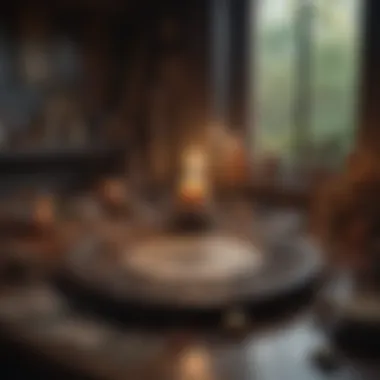
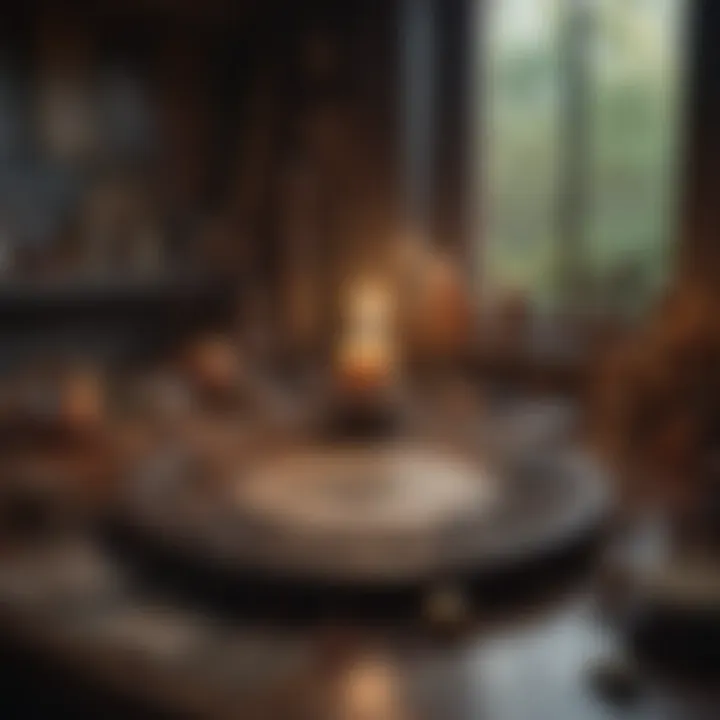
This legacy of persecution has left deep scars and continues to shape the cultural perception of witches. It has often led to their depiction in folklore and media as malevolent figures, further fueling misconceptions. As such, today’s practitioners actively work against these stereotypes, re-defining witchcraft as a practice of enlightenment rather than one of evil.
Modern Interpretations of Witchcraft
The evolution of witchcraft is a testament to its resilience and adaptability. In modern times, many choose to embrace witchcraft as a part of their spiritual journey, reflecting a diverse tapestry of interpretations and manifestations. Current practices range from traditional witches who follow established customs to eclectic practitioners who blend various elements from different cultures.
- Eclectic Witchcraft: This popular trend allows individuals to draw from a variety of cultures and traditions. It empowers practitioners to mold their practices around personal beliefs.
- Wicca: One prominent form, Wicca, incorporates nature worship, the reverence of feminine energies, and a strong ethical code regarding doing no harm.
- Pop Culture Influence: Today, books, films, and social media platforms have emerged as modern conduits for witchcraft, welcoming new generations to explore its vibrant practices.
As society moves towards greater tolerance and understanding, witchcraft is increasingly viewed through a lens of empowerment rather than fear. This shift not only celebrates the practices of witches but also illustrates the ways in which these rituals can invigorate personal power and collective connection.
In summary, the overview of witchcraft deeply enriches the conversation about tarot's role in spiritual practices. Understanding these facets enhances not just knowledge but also appreciation for both tarot and witchcraft. By exploring how they converge, one can unveil a deeper narrative of human connection to the mystical.
The Convergence of Tarot and Witchcraft
The relationship between tarot and witchcraft is more than mere coincidence; it speaks to the shared undercurrents of spirituality, self-discovery, and the quest for deeper knowledge of oneself and the cosmos. Understanding this convergence illuminates how practitioners of both disciplines can harness their synergistic power for personal growth and insight. The melding of these two age-old practices creates a rich tapestry of meaning, tools, and practices that extends far beyond their individual identities.
At the heart of this connection lies the recognition that both tarot and witchcraft emphasize intuition as a guiding force. Tarot cards serve as a bridge to the subconscious, revealing insights that often lie hidden from overt awareness. When blended with the ritualistic elements of witchcraft, the tarot becomes a potent weapon in self-empowerment and spellcasting. Practitioners learn to tap into the inherent energies found within the tarot deck, harnessing symbols and archetypes that correspond to their intentions, desires, or challenges.
The benefits of integrating tarot into witchcraft are substantial. For instance, using tarot to clarify intentions before a spell can create a more focused and effective ritual. In this way, the tarot acts not just as a tool for divination, but as a means of gaining clarity and grounding one's aspirations into tangible actions.
Furthermore, the interplay between these practices encourages practitioners to engage deeply with their intuition. This might manifest in the form of interpreting card meanings not just as fixed answers, but as invitations to explore possibilities that lie within.
As practitioners step into the ritual space with intention, they may find themselves drawn to specific cards, discovering layers of meaning that resonate uniquely with their individual circumstances—the act of exploring these layers is a dance of sorts, a harmonious move through the realms of the seen and unseen.
In this article, we’ll explore various aspects of tarot as a tool for witchcraft in more detail. We will discuss how different spreads can be utilized for spellwork, and how viewing tarot through a witchcraft lens can unlock new meanings and insights.
Tarot as a Tool for Witchcraft
Tarot cards have long been embraced by witches for their vibrant symbols and potential for exploration. They aren't merely a type of fortune-telling; they serve as conduits for understanding one’s inner workings and the surrounding energies.
- Divination and Insights: In many witchcraft traditions, tarot is employed not only for guidance but also as a method to tap into the universe’s whispers. Each card can illuminate a path forward or serve as a mirror, reflecting one's current state of being.
- Spell Enhancement: By integrating selected cards into spell work, witches can amplify the energy of their intentions. For instance, the Strength card might be used in rituals focused on courage, infusing the spell with the necessary vibrational energies.
- Meditation: The cards can also be a focal point for meditation, allowing witches to deepen their understanding of themselves and the universe around them. This inner journey brings about a transformative kind of wisdom.
Common Tarot Spreads Used in Witchcraft
Just as different spells serve unique purposes, so do tarot spreads. Some spreads can be particularly resonant for witches looking to weave tarot into their practice.
- Celtic Cross Spread: This classic spread provides a comprehensive view of a situation, making it ideal for witches looking to delve into the intricacies of their magical workings.
- Three-Card Spread: Simple yet effective, this spread can explore past, present, and future influences, helping witches understand the timeline of their intentions.
- The Path Spread: A more complex spread that can map out potential paths and choices, vibrant with nuances that reflect the witch's journey.
Interpreting Tarot Cards through a Witchcraft Lens
The interpretative aspect of tarot becomes particularly rich when viewed through the lens of witchcraft. A traditional meaning of a card might shift as one considers the context of a spell or an intention.
- Reimagining Symbolism: For instance, the Death card, often feared, can represent transformation and letting go from a witchcraft perspective—essentially a shedding of old skin to make way for new growth.
- Contextual Interpretations: The cards reflect not only individual perspectives but also communal energies. A group of witches interpreting a card may draw out layers of meaning, showcasing their connection to each other, the earth, and the divine.
- Cultural Integration: Different witchcraft traditions may have distinctive interpretations of the cards, often influenced by folklore and local cultural themes, allowing the tarot to be a living document shaped by its users.
In wrapping up, the connection between tarot cards and witchcraft opens up a dimension of practice that is both enriching and enduring. Those who incorporate these elements weave their narratives into the broader tapestry of spiritual understanding.
The Role of Intuition in Both Practices
Intuition, often described as a gut feeling or a sixth sense, plays a significant role in both tarot reading and witchcraft. Understanding the connection between these practices can greatly enhance one's spiritual journey. The ability to intuitively read emotions, circumstances, and outcomes is essential for practitioners. When tarot cards are laid out, it’s not just the symbolism or the imagery that guides interpretation; intuition breathes life into the cards, transforming them from mere images into messages steeped in personal meaning. Similarly, in witchcraft, intuition serves as a guiding light during rituals and spell work, allowing practitioners to attune to the energies of their environment.
Building Intuitive Skills with Tarot
Learning to read tarot intuitively is akin to honing a muscle. At first, it may feel awkward and untrained, but with time and practice, it becomes a natural instinct. Here are some steps to cultivate that skill:
- Daily Draws: Pulling a single card each day and reflecting on its significance helps firm up the connection between intuitive thought and the card's meaning. Consider journaling your thoughts and any feelings that arise.
- Meditation: Take time to meditate on the tarot deck. Consider infusing your readings with mindfulness, focusing solely on the cards, letting your thoughts ebb and flow peacefully.
- Trust Your Instincts: Whether it’s an immediate thought or an emotional reaction to a card, trusting what comes up instead of solely relying on rote meanings can deepen understanding.
Building intuition through tarot not only enhances reading accuracy but enriches the user's connection to the cards themselves.
Witchcraft and the Development of Intuition
Just like with tarot, witchcraft thrives on intuitive abilities. The art of knowing when to perform rituals, how to channel energies, or when to call on specific deities is often guided by a wave of instinct. Practical ways to cultivate intuition in the realm of witchcraft include:
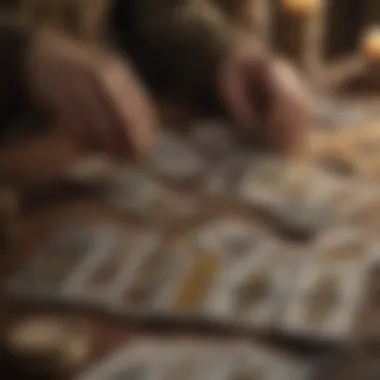
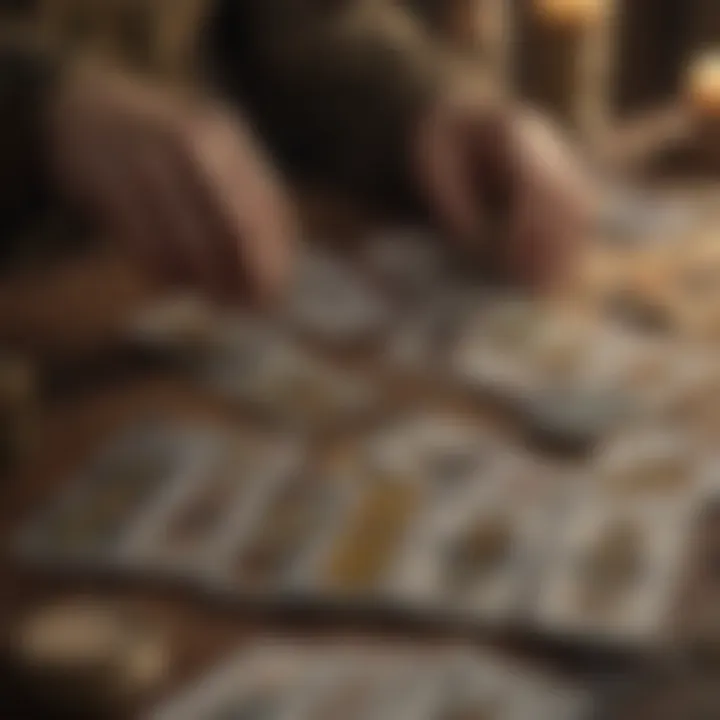
- Nature Immersion: Spend time outdoors, observing and connecting with natural elements. Whether it’s the rustling leaves or the call of a distant bird, nature can stir intuition within.
- Journaling Craft Experiences: Writing down your spells and rituals, along with the outcomes and your thoughts during those practices, can help identify intuitive patterns over time. Reflect on what felt right or wrong during the process.
- Tarot Session in Ritual: Play with incorporating tarot readings directly into your spell work. This could enhance insight into the ritual's direction while fostering a deeper connection to intuition.
Thus, developing intuitive skills within witchcraft not only supports spell efficacy but also fosters a more profound connection to the practice itself.
Combining Intuition with Ritualistic Practices
When intuition meets structured ritual, magic unfolds in powerful ways. Practitioners can benefit from knowing how to blend instinctual insights into their rituals. Here are some thoughts on how to achieve this:
- Set Intentions: Before beginning any ritual, get quiet and center yourself. Setting intentions with an open heart invites spontaneous feelings and insights.
- Flexibility in Rituals: While rituals can have specific components, being open to altering the practice based on intuitive nudges makes each experience unique. If something doesn't feel right, trust how to pivot the spell.
- Closing Rituals with Reflection: After a ritual, take time to reflect. What insights came to you? What emotions surfaced? Writing these down not only enriches your practice but also sharpens intuitive skills for future rituals.
Intuition is the thread that connects tarot, witchcraft, and the practitioner. It creates a dance of energy and inspiration that reflects a deeper understanding of oneself and the universe they inhabit. Through cultivating this often-neglected skill, practitioners can find richer meaning and connection to their spiritual artistry.
Common Misconceptions and Cultural Perceptions
Understanding common misconceptions and cultural perceptions surrounding tarot cards and witchcraft is crucial for both practitioners and enthusiasts. This section aims to clarify misunderstandings while delving into how these perceptions shape societal attitudes. Through addressing these topics, we can foster a more accurate view of the practices and the people who engage in them.
The Stigma Surrounding Tarot and Witchcraft
The stigma associated with tarot and witchcraft often stems from historical narratives and societal fears. Traditionally, these practices have been labeled as taboo, leading many to associate them with witch hunts and a fear of the unknown. This negativity is rooted in a long history where ignorance often bred fear, causing a standard stereotype of "the witch" as an evil figure. Yet, in reality, tarot and witchcraft draw much more from personal empowerment, introspection, and a connection with nature.
Conversely, there’s a prevalent notion that tarot reading is mere fortune-telling. This is a misconception that undermines the profound psychological and spiritual insights these cards can provide. Many who have engaged with tarot will tell you that it's less about predicting the future, and more about unlocking one's potential by guiding individuals to reflect on their own choices and emotions.
Addressing Myths about Tarot Readers and Witches
It’s high time to put to rest some of the myths surrounding tarot readers and witches. One such myth is that all tarot readers are charlatans or are out to deceive people. This couldn't be further from the truth. Many tarot readers approach their practice with integrity and a genuine desire to help individuals navigate their own life paths. They are often skilled in empathetic listening and possess deep insights into human behavior.
Similarly, not all witches adhere to the same practices or beliefs. Many modern witches embrace diversity in their craft, incorporating elements from different cultures and philosophies. It’s essential to recognize that the practice of witchcraft can be as varied as the individuals who practice it, whether they focus on herbalism, elemental work, or intuitive practices.
"Misunderstandings around tarot and witchcraft can lead to misrepresentation and discrimination; it's vital to approach these practices with an open mind."
Changing Attitudes in Contemporary Society
In recent years, there has been a shift in societal attitudes toward tarot and witchcraft. People are beginning to realize that these practices can foster community, self-discovery, and emotional well-being. The rise of social media has played a significant role in this transformation, allowing practitioners to share their experiences and insights more widely. Platforms like Facebook and Reddit have created spaces where enthusiasts can connect, learn, and challenge misconceptions collectively.
Moreover, in a time where mental health is taking center stage in discussions, many find solace in tarot as a tool for reflection and personal growth. Workshops and courses teaching tarot reading and witchcraft practices are thriving, reflecting a growing acceptance and curiosity.
Practical Applications of Tarot within Witchcraft
The practice of integrating tarot within witchcraft is not just a curious blending of symbols and rituals; it's a rich tapestry woven from the threads of intent, intuition, and personal growth. Understanding how tarot can serve as a practical tool in witchcraft opens up myriad avenues for spiritual exploration. These applications can range from enhancing spell work to grounding daily practices, making tarot an integral part of many modern witches' paths.
Using Tarot for Spell Work
When it comes to spell work, tarot cards can act as a potent catalyst. By selecting specific cards to symbolize one's intentions, practitioners can create a narrative that empowers their magical workings. For instance, drawing the Queen of Pentacles might signify a desire for abundance or nurturing, while the Eight of Wands can represent swift action and movement. This selection process becomes a foundational part of the ritual.
Here's how to utilize tarot cards effectively within spell work:
- Card Selection: Before starting a spell, consider the desired outcome. Choose cards that resonate with your intention.
- Creating Circles: Lay out the tarot cards in a circle around the spell ingredients. This visual representation serves to focus energy.
- Affirmative Incantations: For each card, recite affirmations or incantations that align with the essence of the card drawn. This combines the symbolism with spoken intent.
- Closing Rituals: After completion, return the cards to your deck with gratitude, closing the circle and ensuring that the energy flows back into your practice.
By channeling energy through tarot cards during spell work, practitioners harness a deeper connection to the universe's ebb and flow.
Creating Intention with Tarot Card Rituals
Establishing clear intentions is vital in both tarot reading and witchcraft. Rituals that integrate tarot can assist in clarifying and honing those intentions. This process often goes beyond simple card reading; it invites the practitioner to delve into self-discovery and personal growth.
To amplify your intentions using tarot, consider the following:
- Initial Meditation: Begin with a brief meditation. Clear your mind to focus solely on the intention you wish to cultivate.
- Card Draw: Draw three cards representing "What I Want," "What I Need," and "Obstacles in My Way." This layout provides clarity and insight into your goals.
- Reflection and Action: Spend some time contemplating the messages and how they relate to your intention. Write these reflections in a journal.
- Affirmation Writing: Write affirmations based on your findings, utilizing the energy of the cards to reinforce your commitment to these intentions. Reciting these affirmations can enhance their power.
This practice roots intentions deeply into everyday life, forming a bridge between the ethereal and the physical world, making the magical more tangible and relatable.
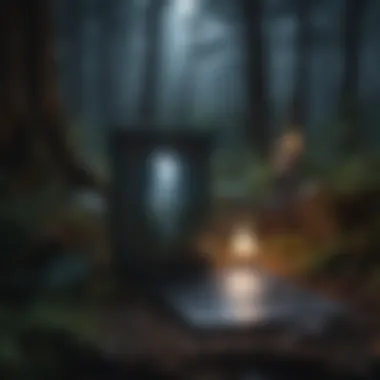
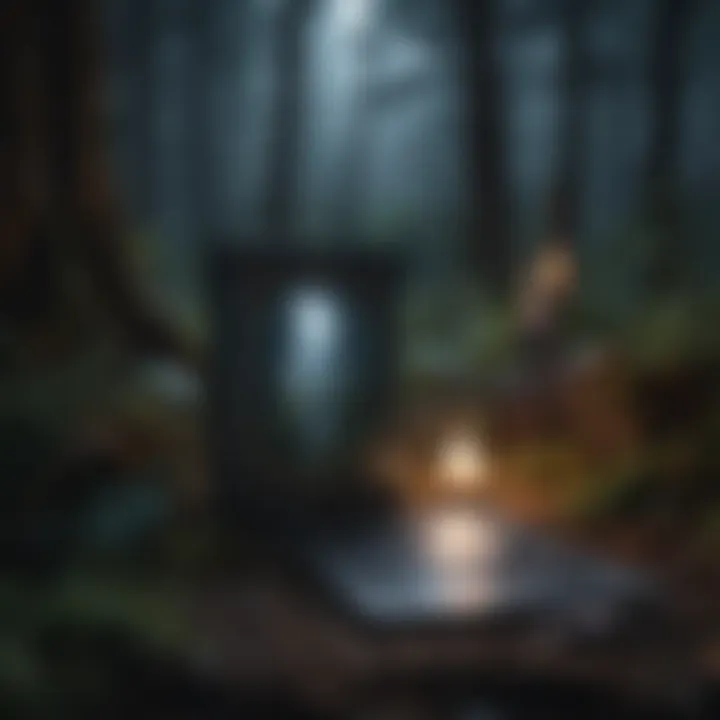
How to Incorporate Tarot into Daily Practices
Integrating tarot into daily life enriches a witch's spiritual journey, creating a consistent reminder of one's path. It encourages reflection, nurtures intuition, and cultivates a profound awareness of one's surroundings. Here are practical methods to weave tarot into daily routines:
- Daily Card Draw: Pull a card each morning. Reflect on its meaning and how it might influence your day. Perhaps the Sun encourages optimism, setting a positive tone.
- Tarot Journaling: Maintain a tarot journal where you document daily draws, experiences, and insights. Over time, this journal becomes a record of your personal growth and intuitive evolution.
- Tarot Meditation: Dedicate time for focused meditation on specific cards. Visualize their energy enveloping you, allowing their wisdom to seep into your consciousness.
- Ceremonial Integration: Incorporate tarot into existing daily rituals, such as lighting a candle while reflecting on a chosen card. This adaptation enhances the intent and purpose behind both practices.
By creating a habit of engaging with tarot, witches can ensure they remain connected to their intentions and the magic of their daily life.
Integrating tarot into your witchcraft practice not only enhances the depth of your spells and rituals but fortifies your understanding of self in a relationship with the universe.
Through these practical applications, tarot becomes much more than cards; it evolves into a versatile companion that guides and influences a witch’s journey.
The Future of Tarot and Witchcraft
Both tarot cards and witchcraft have a long history, yet their futures are equally significant in shaping modern spirituality. As more individuals wander down these paths for guidance and self-exploration, it becomes essential to discern the forthcoming trends and how they may influence practitioners. The evolving context of these traditions not only enhances personal development but also sparks community engagement, leading to more diverse and inclusive interpretations.
Emerging Trends in Tarot Use
In recent years, tarot has seen a resurgence, attracting a new crowd. The rising interest can be attributed to a greater acceptance of spirituality in mainstream society as well as its alignment with mental health awareness.
- Inclusivity in Tarot: Many tarot decks now feature diverse artists and themes, allowing for a more representative experience. People of various backgrounds can find a deck that resonates with their experiences.
- Collaborative Practices: Group settings for tarot readings or workshops are gaining momentum. Participants share insights and interpretations together, creating a collective learning space.
- Focus on Personal Development: More practitioners are using tarot as a tool to foster self-awareness, with card pulling integrated into reflective journaling or meditation routines.
The Integration of Technology in Reading Tarot
Just as the world is becoming more digitized, so too is the practice of tarot. The integration of technology is reshaping how readers approach their art.
- Online Readings: Virtual tarot sessions have become commonplace, allowing readers to connect with clients around the globe. This accessibility has expanded the clientele for many practitioners.
- Mobile Apps: Several applications enable users to draw cards, analyze meanings, and record readings, merging tradition with convenience. Users can access tarot wisdom anywhere, fostering personal reflection.
- Social Media Influence: Platforms like Instagram and TikTok are creating spaces for tarot content where readers share interpretations and engage with a wider audience. This trend cultivates a community of learning and sharing.
Exploring the Landscape of Modern Witchcraft
Modern witchcraft is evolving, marked by a blend of old traditions with contemporary beliefs and practices. As individuals explore their spiritual paths, several notable aspects come to the forefront:
- Community-focused Practices: Witches today are increasingly engaging with local and online communities, fostering connections and support networks that encourage growth and acceptance.
- Environmental Consciousness: Many practitioners are incorporating eco-friendly practices into their rituals, acknowledging their relationship with nature.
- Personalized Pathways: There is a trend toward defining one's personal practice rather than strictly adhering to established traditions. Witches prioritize authenticity in their approaches, allowing for infinite possibilities.
"The beauty of tarot and witchcraft lies in their capacity to adapt and grow, echoing the changes in society while remaining grounded in tradition."
As we step into the future of tarot and witchcraft, the synergy between these two crafts not only reveals fresh perspectives in the spiritual realm but encourages practitioners to forge their unique paths.
End: Reflecting on the Interconnection
The synergy between tarot cards and witchcraft is more than just a whimsical pairing of practices; it represents a profound exploration into self-awareness and the universe. Each element—tarot and witchcraft—holds unique traditions, yet they intertwine beautifully. The importance of understanding this intersection rests on several pillars.
First, both disciplines advocate for personal growth. Tarot serves as a mirror, reflecting one’s inner thoughts and feelings, while witchcraft offers tools for harnessing these insights into physical actions. By integrating the two, practitioners can carve pathways towards a more insightful existence.
Moreover, as we peel back the layers of historical context, we find that these practices have both faced societal scrutiny and evolved over time. Understanding their shared journey allows us to appreciate the resilience inherent in both traditions. The frameworks of tarot readings often intersect with witchcraft rituals, offering practitioners a comprehensive way to engage with their spirituality.
"Tarot and witchcraft together amplify understanding and intuition, creating a journey of self-discovery that can unveil hidden truths."
Yet it’s essential to remain clear on the distinctions as well. While tarot can guide, it does not dictate outcomes. Witchcraft emphasizes intention in action; therefore, combining both requires a carefully balanced approach. This balance invites reflection on how we use knowledge for empowerment rather than manipulation.
Lastly, considering the modern revival of interest in both practices informs our contemporary perspectives. As people seek genuine connections with their spirituality, tarot and witchcraft emerge as integral companions on this quest. The exploration of their interconnection encourages a reevaluation of community, belief systems, and the desire for personalization of spiritual practice.
The Shared Journey of Tarot and Witchcraft
The shared journey of tarot and witchcraft opens a detailed narrative of intertwined destinies. The historical convergence of these two art forms spans centuries, with each enriching the other’s essence. Tarot cards, initially used for gaming, evolved into instruments of divination, much like witchcraft practices that transitioned from simple folk rituals to complex spiritual frameworks.
The symbols in tarot cards often align with astrological concepts, which witchcraft practitioners commonly incorporate. For instance, the Empress card, symbolizing fertility and nurturing, resonates with the essence of many earth-based rituals in witchcraft. Thus, the shared imagery enhances understanding across both practices, leading to deeper interpretations and personal significance.
Additionally, rituals employing tarot can enhance spell work, bringing clarity to intentions. For example, laying out a Three Card Spread before embarking on a major decision can yield insights that inform subsequent magical workings. The meld formed creates a tapestry where insights and intentions become threads woven into the broader fabric of spiritual practice.
Encouragement for Further Exploration
A deep dive into tarot and witchcraft promises more than mere curiosity—it invites a journey of profound exploration. The significance of further investigating the connection between these art forms is manifold.
Initially, consider the potential for personal growth through this intersection. Exploring tarot’s symbolism can elucidate aspects of witchcraft practice that may not have been fully appreciated before. For instance, understanding the meaning behind the Moon card can bring light to the idea of cycles in witchcraft, guiding practitioners on timing their rituals to lunar phases.
Furthermore, workshops, online communities, and reading resources can expand knowledge. Participating in shared experiences can foster connections among practitioners, enhancing individual understanding while building a supportive network. Engaging with platforms like Reddit can reveal insights from diverse perspectives.







